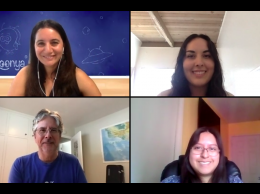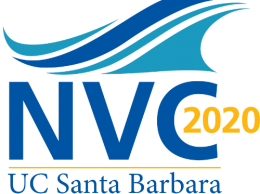With advent of cyber funding, it’s hard to stand out in a crowd
IN THIS ARTICLE
- Columns Topic
- Erika Martin Author
By Erika Martin Friday, December 5th, 2014
It’s well-known that the winter shopping season has migrated from the streets and malls of America to the screens of our computers.
It’s hard for a Santa Barbara storefront to compete with a company standing on a global network of enterprising customers; for tech companies, it’s impossible. Among the fierce competition on the Web, the make-or-break crowdfunding model has been adopted by South Coast startups as the gold standard for testing product viability as well as sustainable growth.
According to data compiled by the Business Times in July, at least $6.3 million has been raised through crowdfunding in the Tri-Counties since 2010. So far this year, more than $1 million has been raised through crowdfunding across the region.
Aside from the simplicity of launching a crowdfunding campaign, one can see the attraction of gauging customer interest before setting up supply chains and wasting seed funding on a product that flops. And even if the initial product isn’t perfect, these customers provide built-in evaluation and feed-back for version 2.0.
Campaign backers also tend to be loyal — most crowdfunding sites, such as Kickstarter, require a campaign’s funding goal to be met in order for it to receive any money. If a product fails, investors are reimbursed, yet they will often follow a startup to its next campaign.
Even experienced crowdfunders misstep. In Nov. 2012, Bill Trammel raised 1,444 percent of his funding goal in 45 days on Kickstarter to produce a portable board for popular board game Settlers of Catan — a campaign Trammel launched late at night on somewhat of a whim.
But in early June, when Trammel launched an effort to create a portable base for a less-popular Settlers of Catan spinoff, the project wasn’t on track to meet its $200,000 goal. Instead of going bankrupt, he simply canceled the Kickstarter and launched a new one the same day.
That endeavor failed too, but at least Trammel was able to move on with his company in-tact and a lesson or two learned. His next project, a collector’s edition of the flagship gaming board, was successfully funded this July with a total of $167,905 from 831 backers.
The crowdfunding model has proven efficient in launching products, but can it be the basis of success?
Jai Ranganathan, who studies crowdfunding at UCSB’s National Center for Ecological Analysis and Synthesis, has discovered that despite the popular perception of crowdfunding as a “magic spigot of cash,” projects that succeed are usually those that already have an audience when they launch.
“The mistake everyone makes is that [people] just put a project up and hope somehow the hype will work,” he said. “You have to build a crowd before you can get funding.”
Even if a startup can prove success in igniting enough buzz to execute a successful campaign, the appeal of the resulting product hasn’t been tested outside a sample of people pre-disposed to support it. This sheltered environment leave unsolved the questions of real market viability and ability to weather competition.
Santa Barbara startup Phone Halo, for example, found some success crowdfunding Bluetooth devices that can attach to and track belongings for those of us who can never remember where we set our keys. Being a universal problem, the Phone Halo team was far from alone in offering Bluetooth tracking services.
Crowdfunding remains Phone Halo’s main source of revenue, and unfortunately the startup that comes out on top will be the one that can become a household name. Right now, I’d hand that award in the Bluetooth tracker category to Tile, a San Mateo startup whose product is nearly identical in appearance and function to Phone Halo’s but is drawing national attention on the back of a crisp marketing campaign.











